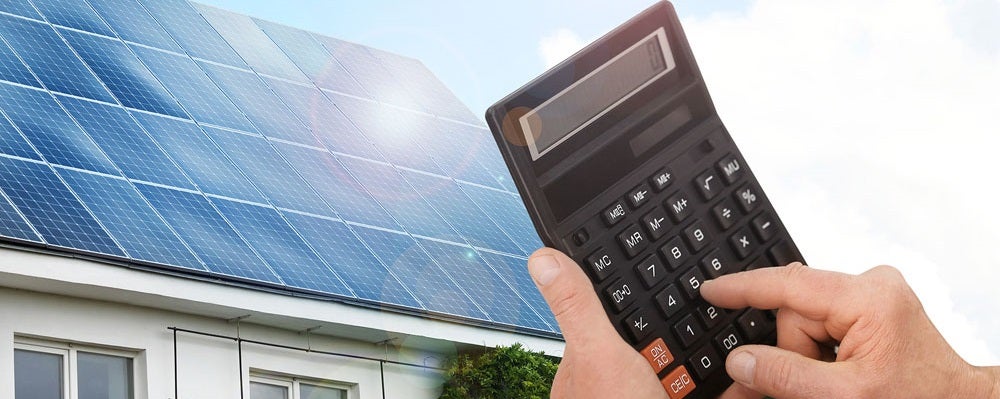Investing in solar energy: What return can you get on your solar investment?
Updated
Updated

The amount of money you save by investing in solar energy varies, depending on factors including where you live, the incentives available from your state government and the type of system you install.
To calculate the solar panel ROI you can expect, you need to get a customized quote for your specific installation. Regardless of individual circumstances, however, the savings are significant. For example, installing a 5-kilowatt system could result in lifetime savings of $38,000 in Oregon, or more than $70,000 in California. While these are very different numbers, they still represent a remarkable solar panel return on investment.
Getting your solar panel investment up and running requires an outlay of around $18,000 to purchase a 6-kilowatt photovoltaic (PV) system. This covers the supply and installation of the three components of a grid-tied solar system, which are:
An optional fourth component is a solar battery, which can store energy for later use, allowing you to self-consume all the solar energy generated by your panels and/or provide power to your home in an outage.
To get an idea of the start-up cost of a system for your home, your best option is to use our online calculator to input your specific details for a quotation.
Harnessing solar energy has numerous long-term benefits for homeowners, but it can be an expensive undertaking. Fortunately, many state governments remain committed to using renewable energy sources, which results in a range of incentives to help pay for solar panels.
Here are some of the popular and valuable incentive programs available:
The federal tax credit for residential solar has been around since 2006 and has funded a great many solar panel investments. This incentive allows homeowners to deduct 30% of the cost of their PV system from their federal income tax. That adds up to $6,000 back on a $20,000 installation from the IRS the following year. This credit is already down from the 30% that was available until the end of 2019, and will reduce further in 2023, so homeowners should make the most of the opportunity while they can.
These include options that vary between states, such as property tax credits, sales tax exemptions, and government-issued cash rebates, all of which can result in your system costing around $14,000 after incentives are applied. If you’re wondering what is a good return on investment, you can rest assured getting the system for this price and realizing lifetime savings in excess of $60,000 is incredible.
See which state incentives you are eligible for.
The encouragement doesn’t end with installation, either. Many states offer additional incentives such as net metering and solar renewable energy credits (SRECs), which enable you to increase your solar ROI by earning the equivalent of cash back on excess energy your system produces.
Programs like the FHA PowerSaver Grant program provide added incentive to install solar systems. This pilot mortgage insurance and home improvement loan program enables homeowners to borrow up to $25,000 over a 20-year period. The loan allows them to pay cash for their solar panel investment, which means they start reaping the savings benefits immediately instead of waiting until the system is paid.
Since homeowners must be able to show proof of ownership to qualify for tax credits, it’s an important component of solar ROI to purchase the system outright.
The cost of solar panels has reduced from $7.24 per watt in 2010 (according to an NREL report), to an average of just $2.95 per watt today. The levelized cost of solar electricity is between $0.08 and $0.11 per kWh after subsidies are applied. In most cases, this is a lot less than what consumers pay their utilities for electricity.
On average, homeowners can expect to save around $1,400 a year on their bill after switching to solar. The rising cost of electricity, combined with the declining cost of solar panels and systems the last few years, makes investing in solar energy a no-brainer for homeowners.
How much money you save depends on key factors, however. It’s important to evaluate the quantity of sunlight you get, estimate your residential solar cost, and consider the various incentives available in your region.
Solar-Estimate’s handy solar costs and savings calculator takes all these factors into account and presents you a detailed estimate of your cost, savings and cash flow over the life of your solar panels.
If net metering is available in your area, it will pay to choose a solar panel investment capable of producing more energy than you need. Net metering allows you to feed power back to the grid for others to use in exchange for credits offset against your own usage. Find out whether net metering applies in your state.
If you’re eligible for incentives you can anticipate your system paying for itself within approximately 7 years. Of course, this depends on the size and startup costs of the system you choose, which determines energy production and therefore your average annual savings and solar panel ROI. You can select your utility company here to find out how long it will take for you to start saving money with your solar installation.
In most states, you will still receive a utility bill, although it could have a negative balance. Depending on the region where you live and the energy provider you use, you might still use a small amount of electricity from the grid. This will require payment for consumption as well as paying a delivery fee in most areas.
If your state allows net metering, the extra power you produce will be offset and you’ll generate credits to use when you need them – for example, during the hot summer months when your air conditioning runs all season. Don’t forget to count this as part of your solar panel return on investment.
To find out more about your solar panel needs, costs, and potential payback period, check out our solar calculator.